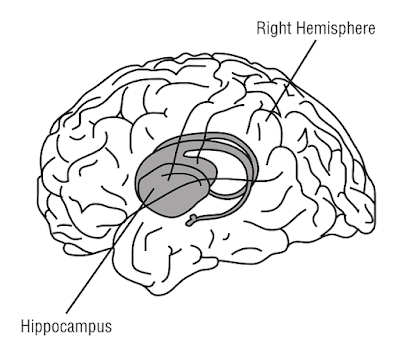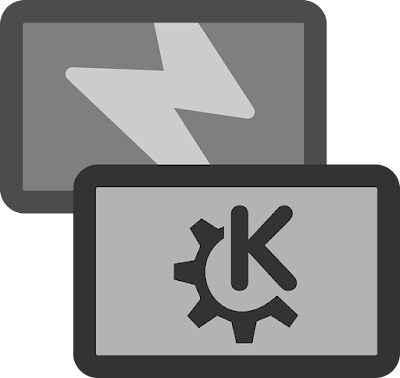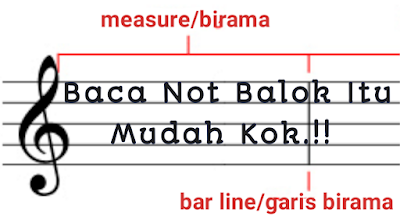How To Improve Memory And Brain Health With This Easy Way
 |
| source: pixabay.com |
As a student, you have a lot of information to understand and memorize for your tests. If you have powerful photographic memory, your job is much easier. But if you’re one of us then you face two issues: first, you don’t remember everything you should, and second, it takes too much time to memorize! What if I told you you could have your cake and eat it too? Here’s how you can boost your memory, memorize more facts, and spend less time doing it.
Semantic Memory
We care about semantic memory, which is a type of declarative memory, which is what’s going to help you get an A on your chemistry final and a 525 on the MCAT.Hippocampi
From examining neural networks in sea snails to caring for amnesic patients with localized lesions, neuroscientists have learned a great deal as to how human memory works and how to squeeze the most utility out of our hippocampi. The hippocampi are the centers in our brain that store long term memory. Looking back over a century ago, we can thank the psychologist Herman Ebbinghaus for studying his own memory and generating what is now known as the Forgetting Curve. In its simplest terms, the Forgetting Curve demonstrates that after forming a memory, we gradually forget more and more of it as time elapses.Neural Connections
Retrieving memories is a separate process from storing them, and this too is imperfect. That’s why eye witness reports are notoriously unreliable. We know from neuroscience fundamentals that repetition potentiates neural connections and allows us to remember information more effectively. The problem is that we have far too much information to learn - we can’t repeat every fact we need to know on a daily basis. Enter the Spacing Effect. By repeated exposures to a piece of information at increasing intervals between each repetition, we can optimize memorization and retain the most information in the least amount of time. The key here is that you must recall the information, and not simply recognize it. Recall refers to being given a cue and retrieving the relevant information on your own.
Inevitably, many students ask me whether or not they should create their own cards or if using a pre-made deck is ok. There are pros and cons to each approach. If you make your own flashcards, you are implementing a form of active learning, and therefore you will learn the information on those flashcards faster and more effectively. Second, if you create the cards, they are in your own words, and you’ll have no difficulty understanding them.
That being said, if you find a high quality deck with high quality cards, one could justify taking the hit in active learning for the benefits in time savings. When learning memorization-heavy information, like studying for the MCAT or USMLE Step 1, using Anki will not only help you learn the information faster, but also retain it for longer periods of time.
Other courses, like physics and organic chemistry, are more conceptual heavy. There is still use for flashcards for all of these subjects, but I would make fewer cards here and prioritize doing more practice problems instead. Some people suggest creating multiple choice practice problem cards, but I advise agains this, as you may find yourself simply memorizing the answer to the question, rather than reinforcing the information and concepts you need to learn.
I have an entire playlist on how to use Anki most effectively. If you aren’t already familiar with the program, these short videos will get you up to speed in no time. In next week’s part two video, we’ll cover specific best practices on how to create good flashcards. Remember, the benefits of Anki are only as good as the flashcards you create. Now while creating good flashcards is key, the proper daily use of Anki is equally important.
That meant cranking through 10 or 20 cards while waiting in line for breakfast, while waiting for the elevator, or even while walking between buildings.
These few cards here and there added up quickly, allowing me to complete most of my reviews before I got back home for the day. It’s not glamorous and it’s not easy, but practicing cards in such a manner was one of the key factors allowing me to crush my boards and impress attending surgeons on my audition rotations. I personally am not a fan of doing Anki for more than 30 or 60 minutes straight. Therefore, if it was a weekend and I was spending most of the day studying, I would set a single 25 minute Pomodoro of Anki to break up the monotony from other studying.
This is challenging in the first few weeks as you’re building the habit. During this time, your review burden also builds, meaning the number of cards you are assigned to review each day. Number three, Avoid Getting Behind on Cards Inevitably, you will fall behind. You will skip a day here or there. Understand that this should be an exception, not the rule.
The more often you skip days, the harder it is to keep up, and the less utility you will get from Anki. When you do fall behind, your best bet is to take a couple days playing catch up to power through your overdue cards. Avoid skipping days and avoid resetting the cards, as you’re losing valuable interval information that ultimately helps to consolidate your semantic memory. Number four, Don’t Make Too Many Cards The two biggest reasons students fail to stick with Anki is creating poor flashcards, which we’ll talk about in part 2, and creating too many flashcards, resulting in an unrealistic daily review burden. Students often get carried away when first using Anki, sometimes creating over one hundred cards for a single lecture.
The Spacing Effect
Recognition refers to seeing a piece of information and finding it familiar, thinking “oh yeah I know that.” For memory purposes, recall is far superior to recognition.This is correlate to the testing effect, whereby being tested and having to recall a piece of information strengthens the memory encoding process. The Spacing Effect is most powerful when the timing is just right. If too little time elapses between repetitions, the information is not reinforced as strongly. If too much time passes, you forget and are unable to recall the desired information. Medical students are tasked with learning insane amounts of information in a very short time frame.Use Platform
Through necessity, many have turned to less common study tools to aid them in overcoming this seemingly insurmountable feat of knowledge. Enter spaced repetition software, the king of which is Anki. Anki and other spaced repetition software automate the process of scheduling facts that you need to learn in the form of flashcards. While far from perfect, Anki is the best option we have right now. I have no affiliation with Anki, but I used it heavily as a medical student and ascribe much of my own success to using it properly. It’s cross platform and syncs across all your devices, which is important for reasons I will get to shortly.Inevitably, many students ask me whether or not they should create their own cards or if using a pre-made deck is ok. There are pros and cons to each approach. If you make your own flashcards, you are implementing a form of active learning, and therefore you will learn the information on those flashcards faster and more effectively. Second, if you create the cards, they are in your own words, and you’ll have no difficulty understanding them.
Practice Good Flashcard
Lastly, you can practice good flashcard principles and best practices, which most students do not follow in creating their flashcards. Creating these ineffective and “bad” flashcards is the most common mistake and main reason that students end up dropping Anki altogether. The main benefit to using a pre-made deck is that you’ll save time on the card creation process. However, if you are following the principles from this channel, you should be efficient enough to create your own cards and reap those additional benefits. As a medical student, I always created my own flashcards.That being said, if you find a high quality deck with high quality cards, one could justify taking the hit in active learning for the benefits in time savings. When learning memorization-heavy information, like studying for the MCAT or USMLE Step 1, using Anki will not only help you learn the information faster, but also retain it for longer periods of time.
Collaboration Platform And Flashcard
By using Anki in your biology or psych classes as a freshman, you’ll remember more information 2 years later when you’re studying for the MCAT. But not all information is created equal, and for some classes I would recommend Anki, but for others you may not need it, or you may find yourself making only a few cards. For information heavy but conceptually light courses, like biology, sociology, or psych, your Anki reliance should be higher.Other courses, like physics and organic chemistry, are more conceptual heavy. There is still use for flashcards for all of these subjects, but I would make fewer cards here and prioritize doing more practice problems instead. Some people suggest creating multiple choice practice problem cards, but I advise agains this, as you may find yourself simply memorizing the answer to the question, rather than reinforcing the information and concepts you need to learn.
I have an entire playlist on how to use Anki most effectively. If you aren’t already familiar with the program, these short videos will get you up to speed in no time. In next week’s part two video, we’ll cover specific best practices on how to create good flashcards. Remember, the benefits of Anki are only as good as the flashcards you create. Now while creating good flashcards is key, the proper daily use of Anki is equally important.
Achieve Dayly Practice
Here’s how to realistically achieve a daily practice. First, Review Strategically As a medical student, I was reviewing between 50-300 cards daily for months at a time. As someone who went into an ultra competitive surgical specialty, there were many early mornings and late nights, limiting the amount of time I had to review my Anki deck. So to reasonably get through all my cards and make this habit sustainable, I learned to use any down time I had to review flashcards. Unlike studying an entire lecture, Anki cards are self-contained, meaning reviewing even 5 cards in the course of one or two minutes is a good use of your time.That meant cranking through 10 or 20 cards while waiting in line for breakfast, while waiting for the elevator, or even while walking between buildings.
These few cards here and there added up quickly, allowing me to complete most of my reviews before I got back home for the day. It’s not glamorous and it’s not easy, but practicing cards in such a manner was one of the key factors allowing me to crush my boards and impress attending surgeons on my audition rotations. I personally am not a fan of doing Anki for more than 30 or 60 minutes straight. Therefore, if it was a weekend and I was spending most of the day studying, I would set a single 25 minute Pomodoro of Anki to break up the monotony from other studying.
Course Of The Day
This is a great trick to enhance your mental endurance over the course of the day. It’s ultimately much easier to do four chunks of 75 cards than a single session of 300 cards. Number two, Practice Every Single Day Anki runs on an algorithm which optimizes for learning information, but it is not easy to schedule days off. It doesn’t care if you are sick, if you want to relax, or if you’re on vacation. It’s therefore critical you do your flashcards every single day.This is challenging in the first few weeks as you’re building the habit. During this time, your review burden also builds, meaning the number of cards you are assigned to review each day. Number three, Avoid Getting Behind on Cards Inevitably, you will fall behind. You will skip a day here or there. Understand that this should be an exception, not the rule.
The more often you skip days, the harder it is to keep up, and the less utility you will get from Anki. When you do fall behind, your best bet is to take a couple days playing catch up to power through your overdue cards. Avoid skipping days and avoid resetting the cards, as you’re losing valuable interval information that ultimately helps to consolidate your semantic memory. Number four, Don’t Make Too Many Cards The two biggest reasons students fail to stick with Anki is creating poor flashcards, which we’ll talk about in part 2, and creating too many flashcards, resulting in an unrealistic daily review burden. Students often get carried away when first using Anki, sometimes creating over one hundred cards for a single lecture.
Understand that each card you create is a card that you’ll have to review in the future.
More Practice And Practice!
Practice some constraint and create cards for more important information while leaving out the less important details. We go over how exactly to do this in a previous video. And lastly, Be Honest with Recall vs Recognition Remember, this algorithm and the spacing effect works best with recall, not recognition. So don’t cheat yourself.
If you aren’t able to get a card correct without flipping to see the back, then mark the card as incorrect. Often times students are forced into a situation where they must cheat on cards for fear of an unrealistic review burden. In most instances, this can be solved by creating better flashcards. On the other extreme, if you forget a single word or a minor detail on a card, don’t be so hard on yourself that you never get past the 1 day interval.
Thank you all so much for reading this artice. If you enjoyed it, let me know when a thumbs up, and comment down below if you have any questions.
Much love to you all, and I will see you guys in that next on
If you aren’t able to get a card correct without flipping to see the back, then mark the card as incorrect. Often times students are forced into a situation where they must cheat on cards for fear of an unrealistic review burden. In most instances, this can be solved by creating better flashcards. On the other extreme, if you forget a single word or a minor detail on a card, don’t be so hard on yourself that you never get past the 1 day interval.
Thank you all so much for reading this artice. If you enjoyed it, let me know when a thumbs up, and comment down below if you have any questions.
Much love to you all, and I will see you guys in that next on









